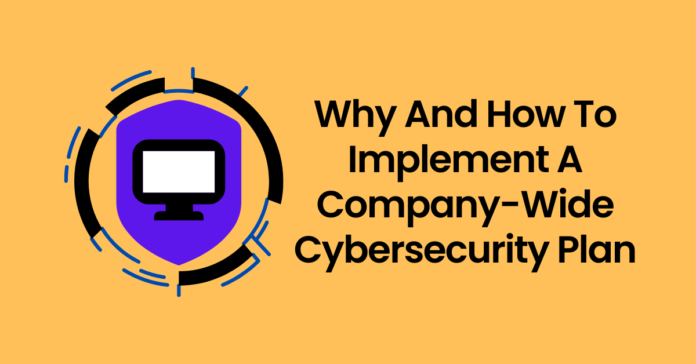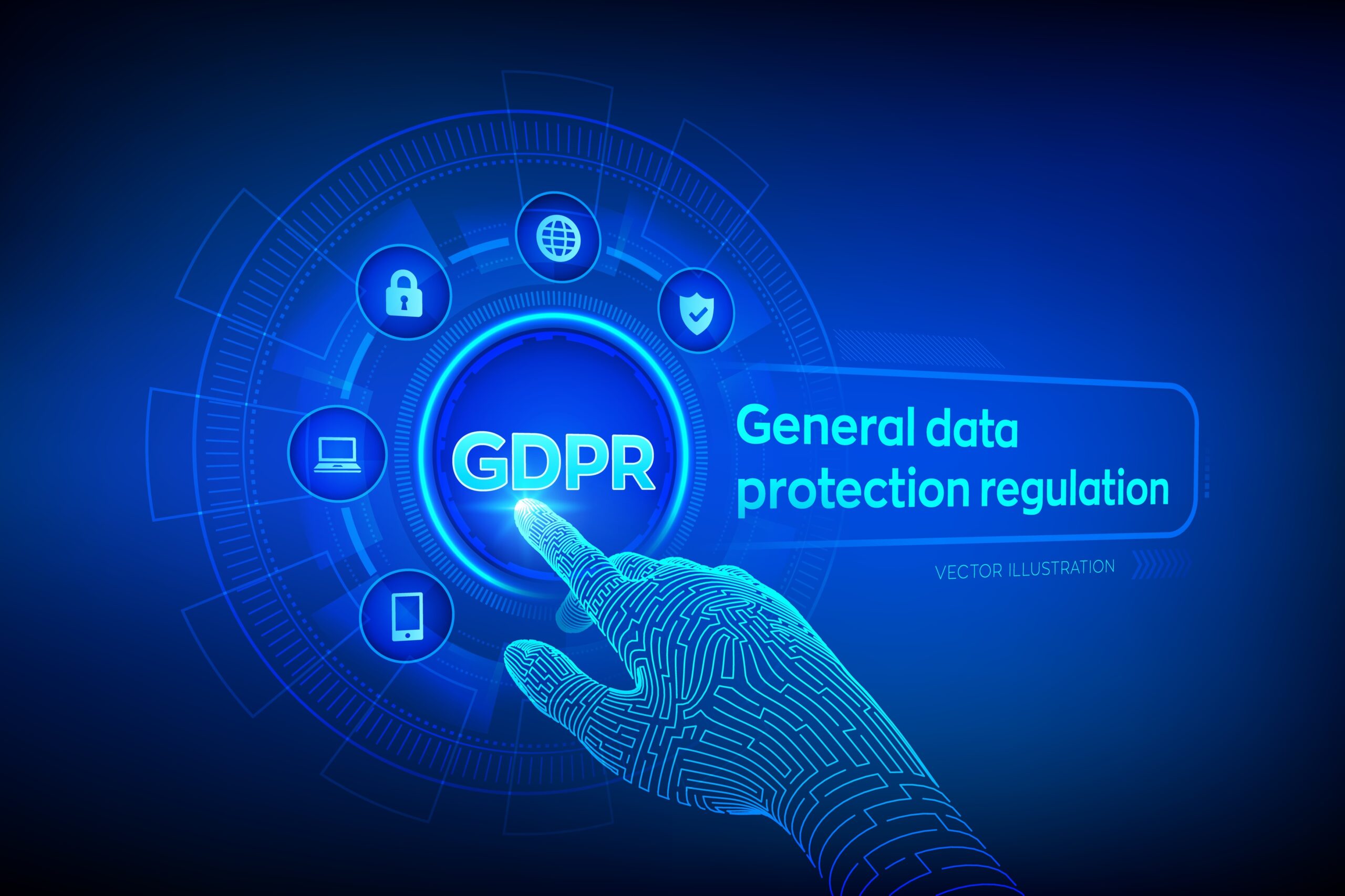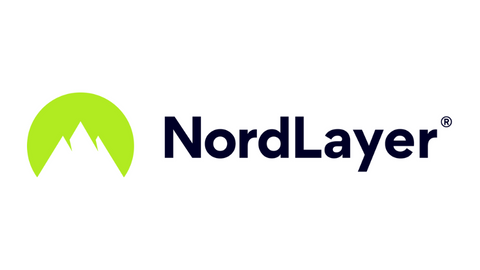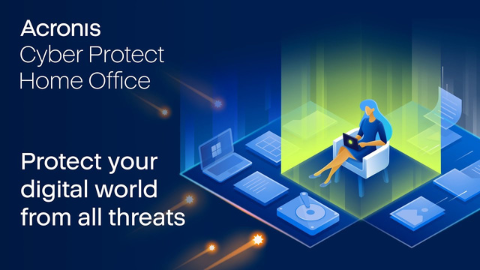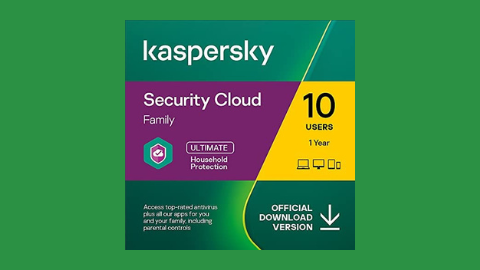Implementing a company-wide cybersecurity plan is essential for the success of any organization. With the rapid growth of technology, cybersecurity threats of any magnitude can come from anywhere and anytime.
To avert this and protect your business, have a company-wide cybersecurity plan and ensure that it's comprehensive and well-thought-out to protect your valuable data and systems.
It is essential to any business's security infrastructure and should be taken seriously.
This article will discuss why a company-wide cybersecurity plan is necessary and how to implement it and protect your business.
Table of Contents
What Is A Company-Wide Cybersecurity Plan?
A company-wide cybersecurity plan is a comprehensive strategy that outlines the objectives, policies, procedures, and resources needed to protect an organization's data, networks, and systems from cyber threats through firewalls, encryption, antivirus software, and other security measures.
It contains a comprehensive set of protocols that all employees, from the CEO to entry-level staff, must follow to protect the company from cyberattacks.
From the scope of the work, you can tell that you'll need IT specialists like Spectrumwise Cybersecurity of Charlotte and areas of South Carolina to help you develop a cybersecurity plan.
The importance of a cybersecurity plan is so dire that it can't be left in the hands of an amateur. After drafting the plan, the IT specialist will implement it by providing, among other services, top-grade cybersecurity solutions.
The plan should also include steps for responding to cyberattacks, such as implementing backups, disseminating security alerts, and integrating employee education and training programs.
A company-wide cybersecurity plan should be tailored to the business's specific needs, considering the type of data and systems being protected, the nature of the threats, the size and scope of the organization, and the nature of its operations.
Why and How to Implement a Company-Wide Cybersecurity Plan
| Why | How |
|---|---|
| Reduce the risk of data breaches and cyberattacks: Protect sensitive information (financial, customer, etc.) and avoid costly consequences. | Conduct a security risk assessment: Identify vulnerabilities and prioritize risks. |
| Ensure compliance with industry regulations: Meet legal requirements and avoid hefty fines. | Develop and implement security policies: Define acceptable use of technology and data access procedures. |
| Improve brand reputation and customer trust: Demonstrate commitment to data security and build trust with stakeholders. | Provide regular security awareness training: Educate employees on cyber threats and best practices. |
| Boost employee productivity and morale: Minimize disruptions caused by cyberattacks and ensure a safe work environment. | Enforce strong password policies: Require complex passwords and regular changes. |
| Minimize downtime and operational disruptions: Protect critical infrastructure and ensure business continuity. | Implement multi-factor authentication (MFA): Add an extra layer of security for logins. |
| Stay ahead of evolving cyber threats: Adapt and update security measures as cyber threats evolve. | Regularly patch and update software: Address vulnerabilities as soon as they're discovered. |
| Protect against insider threats: Monitor employee activity and implement access controls. | Conduct penetration testing: Simulate cyberattacks to identify and address weaknesses. |
| Invest in cybersecurity insurance: Financially mitigate the impact of a cyberattack. | Prepare an incident response plan: Define steps to take in case of a breach. |
| Build a culture of security: Make cybersecurity a shared responsibility across all levels of the organization. | Continuously monitor and improve security posture: Evaluate the effectiveness of security measures and make adjustments as needed. |
How Installing A Company-Wide Cybersecurity Plan Helps Your Business
Nowadays, cyberattacks are becoming more sophisticated and robust, hence the increasing need for companies to have plans to mitigate these changing threats and proactively protect their data, networks, and systems from cyber threats.
Discussed below are the reasons why a company-wide cybersecurity plan is necessary.
1. Cybersecurity Plan Provides Proactive Defense Against Cyber Threats
The first reason why a company-wide cybersecurity plan is necessary is that it provides a proactive defense against cyber threats such as:
- Malware: Malware is malicious software designed to disrupt or damage computer systems. It can steal data, delete or corrupt files, or even take control of a computer. Without a company-wide cybersecurity plan, your business is vulnerable to malware attacks, but if you have one in place, you ensure your business is shielded.
- Phishing Attacks: Phishing is an attack where cybercriminals send out emails or other messages that appear to be from legitimate sources. The messages contain links that, when clicked, take users to malicious websites or download malicious software. A company-wide cybersecurity plan ensures your business is bulletproof to these invasions.
A comprehensive plan ensures organizations can quickly identify and address these and other potential threats before they materialize. This proactive approach helps organizations avoid such hazards and reduces the likelihood of an attack.
READ ALSO: Online Privacy Explained: What It Is, Why It's Important, and How to
2. The Plan Helps Improve Employee Awareness
Secondly, the cybersecurity plan protects your company by improving employee awareness of cybersecurity issues.
The plan provides clear guidance on the organization's cyber security policies and procedures to ensure that all employees understand the importance of cyber security and the steps needed to protect the organization's data and systems.
The plan also provides employees with the resources and training to correctly identify and respond to potential threats.
Further, when employees are always mindful, it reduces the risk of human error. It is a significant cause of cybersecurity incidents; a cybersecurity plan can effectively eliminate it.
3. Helps To Ensure Compliance
Another reason you may want to implement a company-wide cybersecurity plan is because it helps organizations comply with relevant regulations and laws.
Many countries, for instance, have enacted laws requiring companies to implement specific security measures to protect their data.
Data privacy regulations, such as the European Union's General Data Protection Regulation (GDPR) and California's Consumer Privacy Act (CCPA), require businesses to take specific steps to protect their customers' data.
They must have a comprehensive plan to comply with these regulations and laws. It offers companies protection from potential fines and other penalties associated with non-compliance.
READ ALSO: Tips For Keeping Your Server Room Safe And Secure
4. Cybersecurity Plan Helps Save On Cost
Companies also need a company-wide cybersecurity plan as it saves significant amounts of money both in the short and long run. When a company implements a comprehensive plan, it reduces the cost of responding to security threats.
It includes the cost of hiring additional staff to respond to security incidents, as well as the cost of fixing any damage caused by an attack. These cost savings help organizations to allocate their resources better and improve their overall security posture.
5. Cybersecurity Plan Helps Improve Customer Satisfaction
The last reason on this list is the improvement in customer satisfaction. When customers feel confident that their data is secure, they are likelier to use the organization's services and products.
A comprehensive plan helps companies achieve this by ensuring that customer data is safe and that the organization takes all necessary steps to protect it. As a result, customer confidence and trust are built, ultimately improving customer satisfaction.
The importance of a company-wide cybersecurity plan as part of any organization's overall security strategy cannot be overstated. The plan provides clear guidance needed to protect the organization's cybersecurity.
For this and the other reasons above, it's clear that a company-wide cybersecurity plan is necessary, particularly for a company's bottom line.
READ ALSO: What You Need To Know About Android Application Security
Cybersecurity Business Products
How To Approach Implementing A Company-Wide Cybersecurity Plan
Failing to implement a company-wide cybersecurity plan is a grave mistake that can lead to negative consequences. These attacks cause expensive and time-consuming disruptions to business operations, leading to data loss, customer dissatisfaction, and reputational damage.
The correct knowledge to implement a comprehensive and well-thought-out cybersecurity plan is essential for any organization's success.
With the right policies, procedures, technology, and training, you can create a comprehensive plan that will help keep your company safe.
Here are some steps your company can take to ensure its cybersecurity plan is effective and thorough.
Step One: Identify Your Vulnerabilities
To begin the process, you need to carry out a risk assessment. It means identifying the potential threats and vulnerabilities that could affect your organization. You need to understand your assets, their data, and who has access to them.
By assessing your risk, you determine which areas of your organization need to be addressed and what measures need to be taken to protect them. This step is essential for ensuring your cybersecurity plan is comprehensive and practical.
Step Two: Come Up With Policies And Procedures
Once you have assessed your risk, create policies and procedures to protect your company. The policies must be acceptable and outline what employees can do with company data and the security measures to protect the data.
Developing a procedure for responding to security incidents, such as data breaches, is also necessary.
Operational policies and procedures depend on ensuring that all employees understand and know the consequences of failing to comply. It helps to boost accountability for the safety of the company's data.
Step Three: Train Employees
After establishing policies and procedures, the next step is to train employees on cybersecurity best practices. It includes teaching them how to recognize potential security threats, handle company data securely, and take appropriate action if they suspect a breach.
In addition, provide regular training on the latest security trends, technologies, and policies to boost cybersecurity.
The training should be regular so that you can update your team members as technology advances. That way, every staff member will always be sharp and on the lookout for potential cybersecurity issues.
Step Four: Implement The Right Technology
Utilizing cutting-edge technology to protect your organization is critical for a company-wide cybersecurity plan to be effective.
Tech may include firewalls, antivirus software, and security monitoring systems optimized for specific requirements. Encryption technologies also come in handy when protecting sensitive data.
Ensure that your systems are up to date and that the necessary patches and updates are continually installed. It will help ensure that your organization is protected from even emerging and latest security threats.
Step Five: Monitor, Review, And Respond
For the continued reliability of a company-wide cybersecurity plan, it's crucial to monitor and review its security measures regularly.
Conduct regular vulnerability scans and penetration tests to identify your system's potential weaknesses and monitor your network traffic to detect any suspicious activity.
These regular reviews enable you to keep updating your security measures by regularly testing and reviewing your plan to ensure it's still effective and assessing if all employees are still aware of their responsibilities.
Step Six: Develop A Response Plan
Finally, you'll need to develop a response plan in case systems fail and there's a cybersecurity incident.
Instructions for responding to a breach, communicating with customers and the media, and investigating the incident must be included in a response plan to help when things get tough.
It also needs guidelines for reporting the incident to the appropriate authorities and any necessary remediation steps.
You must regularly back up data as part of the recovery plan in case of a breach. Remember to ensure that all your team members know about the response plan and understand their roles and responsibilities in responding to an infringement and minimizing or eliminating the damages.
Developing and installing a comprehensive cybersecurity strategy is integral to your company's safety. The key to a successful cybersecurity plan is understanding your risk and taking the necessary steps to protect your organization.
When implemented correctly, a comprehensive plan protects you before and even after a cybersecurity incident, which will be rare.
Summary
A company-wide cybersecurity plan is essential for any organization that uses technology and digital information as part of its operations and wants to protect itself from cyber threats.
Implementing a well-thought-out plan is crucial to the success of any company, and the steps outlined above help organizations do just that and ensure that their strategy is comprehensive and effectual.
By following these steps, companies can ensure they have the safeguards to protect their valuable data and systems.
INTERESTING POSTS
About the Author:
Daniel Segun is the Founder and CEO of SecureBlitz Cybersecurity Media, with a background in Computer Science and Digital Marketing. When not writing, he's probably busy designing graphics or developing websites.


